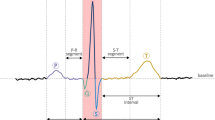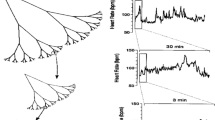Abstract
Electrocardiogram (ECG) signal monitoring is crucial in the operating room. During surgery, when using an electrosurgical unit (ESU), the ECG signal is corrupted by strong interference generated by the ESU, so-called Electrosurgical Artifacts (EAs). The objective of this study is to enhance the infected ECG signal and to remove the impact of the EAs. Motivated by the fact that the artifacts’ energy is greater than that of the ECG signal, we propose a new algorithm to select the intrinsic mode function (IMFs) based on Complete Ensemble Empirical Mode Decomposition with Adaptive Noise (CEEMDAN) in combination with a normalized least mean square (NLMS) adaptive filter. More specifically, CEEMDAN is firstly applied to the observed ECG signals. Then, several IMFs are reconstructed and finally, the EAs and the de-noised ECG signal are estimated. To further improve the estimated ECG signal, a NLMS adaptive filter is applied by exploiting the noise estimated by the CEEMDAN-based algorithm. Our experimental results are obtained using real ECG signals. To illustrate the effectiveness of the proposed algorithm, we compare our results with those obtained by applying the thin singular value decomposition, an adaptive SVD or wavelets, all these methods are mixed with an adapter filter. The accuracy of all method is assessed using different performance metrics, such as MSE and improvement SNR. The proposed method outperforms all other methods. Indeed, it improves the SNR by an average of 7 dB and provides an ECG signal with a regular rhythm.














Similar content being viewed by others
Notes
Sifting process is the subtraction operations necessary to extract an IMF.
Mode mixing is the occurrence of oscillations of different amplitudes in one IMF, or the presence of similar oscillations in different IMFs.
References
Munro, M. G. (2012). Fundamentals of electrosurgery part I: Principles of radiofrequency energy for surgery. In The SAGES manual on the fundamental use of surgical energy (FUSE). New York: Springer (pp. 15–59).
Riff, K. M. (2015). Electrosurgery detection. US 8,961,505 B2.
Ariès, P., Bensafia, K., Mansour, A., Clément, B., Vincent, J.-L., & Nguyen, B. V. (2019). Design and evaluation of a wireless electrocardiogram monitor in an operating room: A pilot study. Anesthesia and Analgesia,129(4), 991–996.
Bensafia, K., et al. (2017). Wireless based system for continuous electrocardiography monitoring during surgery. International Journal of Biomedical Engineering and Technology,11(10), 571–577.
Graja, S., & Boucher, J. M. (2003). Multiscale hidden Markov model applied to ECG segmentation. In IEEE international symposium on intelligent signal processing, WISP, Budapest, Hungary (pp. 105–109).
Pan, J., & Tompkins, J. W. (1985). A real-time QRS detection algorithm. IEEE Transactions on Biomedical Engineering,32(3), 230–236.
Hadj Slimane, Z.-E., & Naït-Ali, A. (2010). QRS complex detection using empirical mode decomposition. Digital Signal Processing,20(4), 1221–1228.
Zidelmal, Z., Amirou, A., Adnane, M., & Belouchrani, A. (2012). QRS detection based on wavelet coefficients. Computer Methods and Programs in Biomedicine,107(3), 490–496.
Kadambe, S., Murray, R., & Boudreaux-Bartels, G. P. (1999). Wavelet transform-based QRS complex detector. IEEE Transactions on Biomedical Engineering,46(7), 838–848.
Sameni, R., Jutten, C., & Shamsollahi, M. B. (2008). Multichannel electrocardiogram decomposition using periodic component analysis. IEEE Transactions on Biomedical Engineering,55(8), 1935–1940.
Biswas, U., Gain, B., & Discipline, C. E. (2012). Least-mean-square algorithm based adaptive filters for removing power line interference from ECG signal. In Proceedings of international conference on infonnatics, electronics & vision, Dhaka (pp. 737–740).
Zhang, Z., Silva, I., Wu, D., Zheng, J., Wu, H., & Wang, W. (2014). Adaptive motion artefact reduction in respiration and ECG signals for wearable healthcare monitoring systems. Medical & Biological Engineering & Computing,52(12), 1019–1030.
Wagh, R. D., Khandarkar, K. R., Shipne, D. D., & Kharde, S. P. (2014). Noise removal from electrocardiogram (ECG) a comparison approaches. International Journal of Advanced Research in Computer Science and Electronics Engineering,3(1), 47–51.
Joshi, S. L., Vatti, R. A., & Tornekar, R. V. (2013). A survey on ECG signal denoising techniques. In International conference on communication systems and network technologies, CSNT, Gwalior, India (pp. 60–64).
Shetty, P., & Bhat, S. (2014). Analysis of various filter configurations on noise reduction in ECG waveform. International Journal of Computing, Communication and Instrumentation Engineering,1(1), 1–4.
Brouse, C., Dumont, G. A., Herrmann, F. J., & Ansermino, J. M. (2006). A wavelet approach to detecting electrocautery noise in the ECG. IEEE Engineering in Medicine and Biology Magazine,25, 76–82.
Plonsey, R. (1999). Bioelectric phenomena. In Wiley encyclopedia of electrical and electronics engineering, Hoboken, NJ, USA: John Wiley & Sons, Inc.
De Lieven, L., De Moor, B., & Vandewalle, J. (2000). Fetal electrocardiogram extraction by blind source subspace separation. IEEE Transactions on Biomedical Engineering,47(5), 567–572.
Bensafia, K., Mansour, A., & Haddab, S. (2018). Blind elimination of electrical artifacts caused by the electrosurgical units (ESU) for ECG Signals. European conference on electrical engineering & computer science, Bern, Switzerland, December.
Huang, N. E., et al. (1998). The empirical mode decomposition and the Hilbert spectrum for nonlinear and non-stationary time series analysis. Proceedings of the Royal Society A Mathematical Physical and Engineering Sciences,454(1971), 903–995.
Rilling, G., Flandrin, P., & Gonçalvès, P. (2003). On empirical mode decomposition and its algorithms. In IEEE-EURASIP workshop on nonlinear signal and image processing, vol. 3, Grado, Italy (pp. 8–11).
Rilling, G., Flandrin, P., Gonalves, P., & Lilly, J. M. (2007). Bivariate empirical mode decomposition. IEEE Signal Processing Letters,14(12), 936–939.
Wu, Z., & Huang, N. E. (2004). A study of the characteristics of white noise using the empirical mode decomposition method. Proceedings of the Royal Society A Mathematical Physical and Engineering Sciences,460(2046), 1597–1611.
Rilling, G., Flandrin, P., & Gonc, P. (2005). Empirical mode decomposition, fractional Gaussian noise and hurst exponent. In IEEE international conference on acoustics, speech, and signal processing, vol. 4 (pp. 489–492).
Flandrin, P. (2004). Empirical mode decomposition as a filter bank. IEEE Signal Processing Letters,11(2), 112–114.
Colominas, M. A., Schlotthauer, G., & Torres, M. E. (2014). Improved complete ensemble EMD: A suitable tool for biomedical signal processing. Biomedical Signal Processing and Control,14, 19–29.
Safieddine, D., et al. (2012). Removal of muscle artifact from EEG data: Comparison between stochastic (ICA and CCA) and deterministic (EMD and wavelet-based) approaches. EURASIP Journal on Advances in Signal Processing,2012(1), 1–15.
Liang, H., Lin, Z., & McCallum, R. W. (2000). Artifact reduction in electrogastrogram based on empirical mode decomposition method. Medical & Biological Engineering & Computing,38(1), 35–41.
Boudraa, A. O., Cexus, J. C., & Saidi, Z. (2004). EMD-based signal noise reduction. International Journal of Signal Processing,1(1), 33–37.
Wu, Z., & Huang, N. E. (2009). Ensemble empirical mode decomposition: A noise assisted data analysis method. Advances in Adaptive Data Analysis,1(1), 1–41.
Lei, Y., He, Z., & Zi, Y. (2009). Application of the EEMD method to rotor fault diagnosis of rotating machinery. Mechanical Systems and Signal Processing,23(4), 1327–1338.
Torres, M. E., Colominas, M. A., Schlotthauer, G., & Flandrin, P. (2011). A complete ensemble empirical mode decomposition with adaptive noise. In 2011 IEEE international conference on acoustics, speech and signal processing (ICASSP) (pp. 4144–4147).
Colominas, M. A., Schlotthauer, G., Torres, M. E., & Flandrin, P. (2012). Noise-assisted EMD methods in action. Advances in Adaptive Data Analysis,04(04), 1250025.
Golub, G. H., & Van Loan, C. F. (1996). Matrix computations (3rd ed.). Baltimore: John Hopkins.
Balzano, L., & Wright, S. J. (2013). On grouse and incremental SVD. In 2013 5th IEEE international workshop on computational advances in multi-sensor adaptive processing (CAMSAP) (pp. 1–4).
Bunch, J. R., & Nielsen, C. P. (1978). Updating the singular value decomposition. Numerische Mathematik,129, 111–129.
Mansour, A., & Al-Falou, A. (2006). Performance indices of BSS for real-world applications. In European signal processing conference, Florence, Italy (pp. 2–6).
Mansour, A., Kawamoto, M., & Ohnishi, N. (2002). A survey of the performance indexes of ICA algorithms. In Procedings of the IASTED international conference modelling, identification, and control, Insbruck, Austria (pp. 660–666).
Ioana, C., Mansour, A., Quinquis, A., & Radoi, E. (2008). Digital signal processing using Matlab. Hoboken: Wiley.
Singh, P., Pradhan, G., & Shahnawazuddin, S. (2017). Denoising of ECG signal by non-local estimation of approximation coefficients in DWT. Biocybernetics Biomedical Engineering,37(3), 599–610.
Flandrin, P., Gonçalvès, P., & Rilling, G. (2004). Detrending and denoising with empirical mode decompositions (pp. 1581–1584). Vienna: EUSIPCO.
Huang, N. E., & Shen, S. S. P. (2005). EMD equivalent filter banks, from interpretation to applications. In N. E. Huang & S. S. P. Shen (Eds.), Hilbert–Huang transform and its applications (Vol. 5, pp. 57–74). Singapore: World Scientific.
Kopsinis, Y., Mclaughlin, S., & Member, S. (2009). Development of EMD-based denoising methods inspired by wavelet thresholding. IEEE Transactions on Signal Processing,57(4), 1351–1362.
Boudraa, A. O., & Cexus, J. C. (2007). EMD-based signal filtering. IEEE Transactions on Instrumentation and Measurement,56(6), 2196–2202.
Chang, K. M. (2010). Arrhythmia ECG noise reduction by ensemble empirical mode decomposition. Sensors,10(6), 6063–6080.
Author information
Authors and Affiliations
Corresponding author
Ethics declarations
Conflict of interest
The authors declare that they have no conflict of interest.
Ethical approval
All the signals used in this article were recorded by physicians in the operating room of Clermont Tonnerre military teaching hospital in Brest, France. A strict medical protocol was approved by the hospital’s ethics committee. Written informed consents were obtained preoperatively from the patients. All competent patients scheduled for surgical procedures using an ESU during the study period were included. Exclusion criteria were age < 18 years and patients with pacemakers or implantable cardioverter defibrillators.
Additional information
Publisher's Note
Springer Nature remains neutral with regard to jurisdictional claims in published maps and institutional affiliations.
Rights and permissions
About this article
Cite this article
Bensafia, K., Mansour, A., Boudraa, AO. et al. Blind separation of ECG signals from noisy signals affected by electrosurgical artifacts. Analog Integr Circ Sig Process 104, 191–204 (2020). https://doi.org/10.1007/s10470-020-01674-1
Received:
Revised:
Accepted:
Published:
Issue Date:
DOI: https://doi.org/10.1007/s10470-020-01674-1




